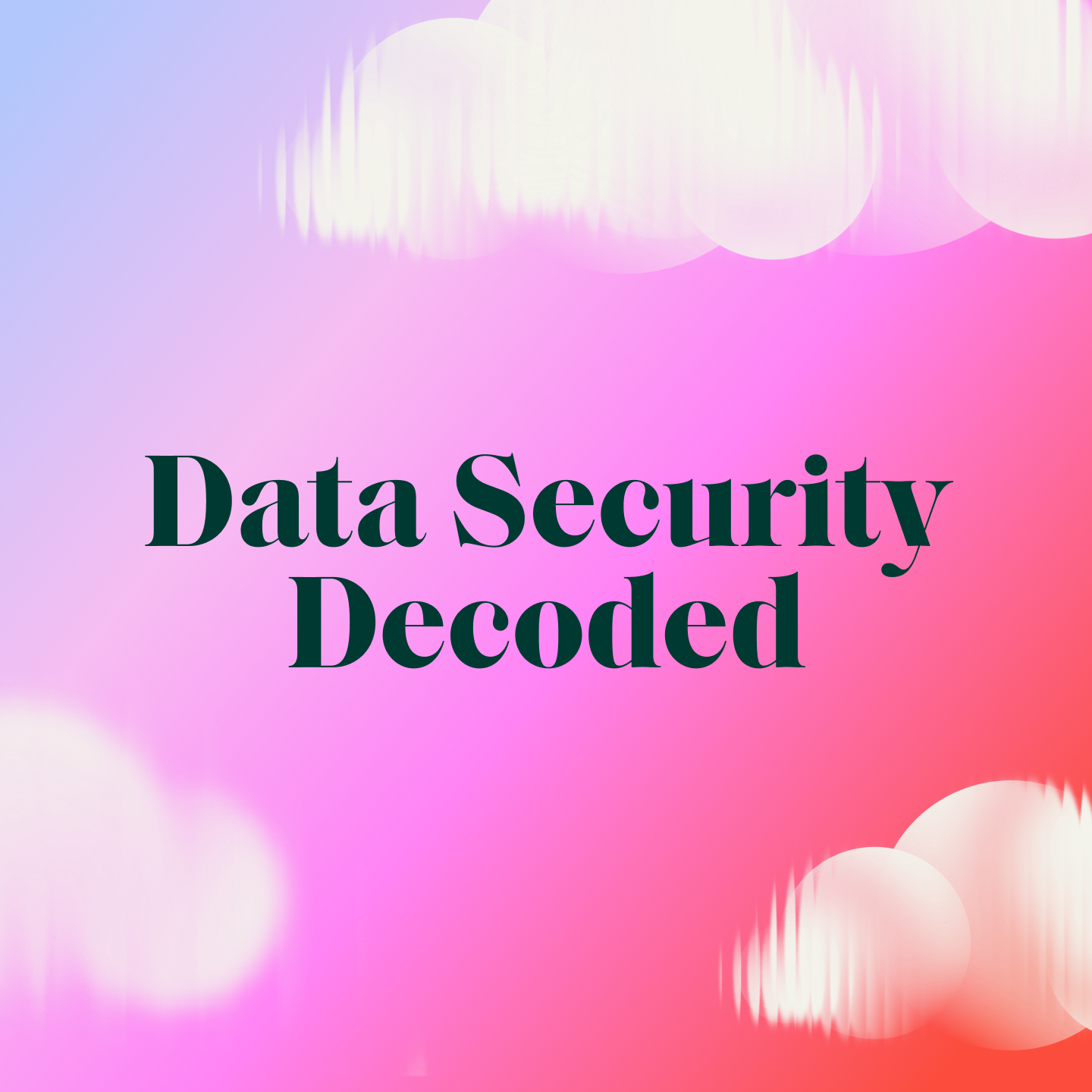Securing the Software Supply Chain
June 24, 2025

In this episode of Data Security Decoded, Allison Wikoff, a 20-year cybersecurity veteran and threat intelligence expert, cuts through the noise and identifies some unique threats within today's security landscape. From the surprising shift toward exploiting old vulnerabilities to the reality of AI-powered attacks, discover why the fundamentals of cybersecurity matter more than ever. Whether you're a CISO navigating supply chain risks or a security analyst trying to separate hype from reality, this episode delivers practical intelligence from someone who tracks threats for a living.
• Understand why known vulnerabilities have become the dominant attack vector (even for criminal groups)
• Learn to identify and manage third-party risks before they become ransomware nightmares
• Discover the truth about AI attacks and why they're not as revolutionary as headlines suggest
• Get actionable steps to strengthen your security posture without massive budget increases
Navigating Modern Cybersecurity: From Supply Chain Risks to AI Evolution
In this episode of Data Security Decoded, Allison Wikoff, a 20-year veteran in information security and threat intelligence, explores current cybersecurity challenges, emerging threats, and practical defensive strategies for organizations of all sizes.
What You'll Learn:
- How to prioritize vulnerability management by focusing on critical edge devices and access points
- Why understanding your network architecture is crucial for effective threat defense
- The reality of AI in cyber attacks: current uses, limitations, and practical defense strategies
- How to build supply chain resilience through vendor assessment and backup supplier planning
- Why older vulnerabilities remain a primary attack vector and how to address them effectively
- The framework for developing an actionable threat profile tailored to your organization's needs
Key Insights:
- Threat actors increasingly target known vulnerabilities over sophisticated zero-day exploits
- Supply chain security requires understanding vendor access levels and maintaining secondary suppliers
- AI adoption in cyber attacks remains focused on basic tasks like improving phishing emails and code generation
- Organizations should prioritize patching vulnerabilities in edge devices like VPNs and WAFs
- Building an effective security strategy starts with understanding your organization's specific threat profile
- Partnering with vendors and suppliers can help smaller organizations enhance their security capabilities
Highlights:
[00:00:00] Vulnerability Exploitation Trends
Allison Wikoff reveals that vulnerability exploitation has become a dominant attack vector across both criminal and state-sponsored threat actors. The shift marks a departure from traditional assumptions that mainly espionage-focused groups leveraged vulnerabilities. Security teams must prioritize patching edge devices like VPNs and WAPs that provide remote access capabilities. Rather than trying to patch everything, organizations should focus on understanding their network architecture and critical access points. A real-world example is the Log4j vulnerability, which highlighted the challenge of identifying vulnerable components embedded within other systems. This insight helps security teams better allocate limited resources by focusing on the most critical vulnerabilities first.
[04:30] Supply Chain Security Essentials
Wikoff emphasizes that modern supply chain security requires looking beyond just your own organization's defenses. Organizations must thoroughly understand their vendors' access levels and potential impact on operations. She recommends implementing specific training programs and enhanced authentication measures, particularly for password resets and employee validation. Running tabletop exercises focused on supplier-related ransomware scenarios helps identify weak points. The key takeaway is maintaining backup suppliers for critical services to ensure business continuity when primary vendors face disruptions.
[07:23] AI in Cybersecurity: Reality vs Hype
Tolin shares that while AI adoption by threat actors is increasing, it hasn't revolutionized attack tactics as many feared. Current AI usage focuses mainly on improving phishing email quality and assisting with malware code generation. Organizations should understand that threat actors typically follow the path of least resistance rather than pursuing complex AI-driven attacks. Most AI implementation mirrors legitimate business use - automating repetitive tasks rather than enabling sophisticated new threats. This insight helps security teams maintain perspective and avoid overinvesting in AI-specific defenses while staying focused on fundamental security measures.
[14:08] Threat Profile Development
Tolin advocates for organizations to start by understanding what assets would interest attackers rather than chasing every new threat. The rapidly changing threat landscape makes it impossible to defend against everything, requiring a focused approach based on your specific risk profile. Security teams should identify their most critical assets and likely threats, then build defenses around protecting those priorities. Organizations shouldn't hesitate to leverage external expertise, as even government agencies rely on partners for threat intelligence. This practical framework helps organizations develop sustainable security programs aligned with their actual risks rather than theoretical threats.
Episode Resources:
- Caleb Tolin on LinkedIn
- Allison Wikoff on LinkedIn
- PwC website
- PwC - Year in Retrospect Report 2024
- Rubrik Zero Labs website
Data Security Decoded is handcrafted by our friends over at: fame.so